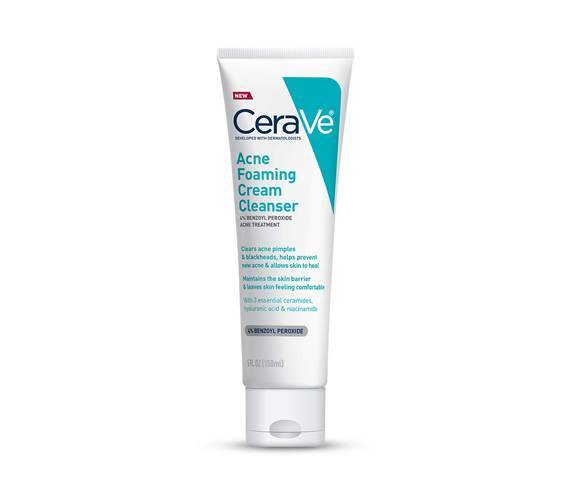7 Potential Acne Causes Behind Those Out-of-Nowhere Breakouts
August 31, 2021Periods, hormone fluctuations and stress often bear the brunt of blame when it comes to our breakouts. But if your skin is suddenly laden with unexpected pimples, there may be other lesser-known causes to point the finger at. Because it’s not always obvious what day-to-day factors can disrupt our complexion’s fresh-looking appearance, we did some digging around to discover what else may cause breakouts. Ahead, find seven potential unsuspecting causes behind acne flare-up, plus, what you can do to help lessen their frequency and appearance if you so choose.
Pets
You love your furry friend as much as the next person and engage in cuddle sessions on the regular. In some cases, you may even allow your pet to lick your face or curl up into bed with you. We hate to be the bearer of bad news, but have you ever considered the amount of bacteria your pet could be carrying around? Saliva aside, even the fur on your cat or dog can be home to a number of germs. When these grimy particles come into contact with your skin, it’s possible that blemishes are the result.
What you should do: You can still cuddle with your precious family member, but try to keep them away from your face to lessen the chance of developing a breakout.
Toothpaste
Toothpaste is often thought of as an inexpensive spot treatment for blemishes (although we recommend not to do this), but some formulas, when used normally, can actually trigger flare-ups. While brushing your teeth, toothpaste may dribble out the corners of your mouth and linger in the area until you clean up. Because common toothpaste ingredients like menthol can lead to dryness, it’s easy to see why this scenario can mean trouble.
What You Should Do: Brush your teeth before you wash your face. This will help ensure that any lingering toothpaste residue around your mouth is removed. We recommend using the CeraVe Acne Foaming Cream Cleanser because it is formulated with benzoyl peroxide and hyaluronic acid so it zaps zits without drying your skin out.

Washcloths
It’s no secret that pillowcases, sheets, makeup brushes and blending sponges need to be cleaned regularly to avoid transfer of dirt and bacteria onto the skin. But are you remembering to do the same with your towels and washcloths? Typically stored in a bathroom — a breeding ground for bacteria and mold growth — these cloths can be silently affecting your complexion (or body) with the appearance of unwanted zits. This is called acne mechanica, the result of objects or materials coming in contact with your skin and provoking blemishes.
What You Should Do: You can likely get away with washing your makeup brushes every other week, but facial cloths and shower robes, on the other hand, should receive more frequent cleaning. Also, try to reduce the amount of friction when you dry your skin. Gently pat — don’t rub — with a clean washcloth after cleansing or showering.
Throw Pillows
Are decorative throw pillows piled high on your bed? Unlike the pillows you sleep on, these plush accents often go unwashed for extended periods of time. They’re also usually tossed onto the floor before shut-eye, making them even more susceptible to picking up bacteria and germs.
What You Should Do: Try to reduce the amount of contact that you have with your throw pillows while lounging atop your bed or couch. If there’s a removable case, throw it into the wash with your laundry. Pay attention to the fabric, however, because some — especially if covered in silk or wool — should be dry-cleaned or hand-washed.
Sleeping With Wet Hair
It’s known that some hair products can clog your pores, which can lead to breakouts along your hairline during the day, especially if you have bangs. If you don’t shower at night, those same irritants can rub against your skin while you sleep. But hairstyling products aren’t the only hair-related acne culprits out there. If you sleep with wet hair night after night, your skin may be suffering the consequences. Remember, bacteria like to hang out in damp, dark and warm places. If you lay down on your pillow at night with damp hair, you may just be creating an environment for bacteria to grow.
What You Should Do: Dry your hair before hitting the sack. When possible, pull your hair back to keep it off your face — especially when you’re sleeping.
Cell Phones
Some social experts say we should make a conscious effort to spend less time glued to our phones for a number of reasons, but did you know that doing so could also prove to be beneficial for our skin as well? Pimples that appear around your chin and jawline could be the result of frequent contact with a bacteria-laden cell phone. When dirt and grime from your smartphone mixes with the oils on your face, it can lead to the appearance of breakouts and blemishes.
What You Should Do: Wipe down your device regularly to remove any build-up of oil, makeup or other germs.
Your Significant Other
Are you breaking out after making out? It’s possible that your S.O. may be to blame. It’s a common occurrence, so much so that it’s even got an official name — consort acne. When your partner’s sweat, oil, dirt, facial or hair products come into contact with your skin, they can clog your pores and eventually lead to the appearance of blemishes.
What You Should Do: As much as acne can suck, it’s not worth breaking up over. Instead of letting consort acne ruin your relationship, follow these simple tips for reducing your chances of developing zits after your cuddle sesh.
Photo: Chaunte Vaughn
Read More:
6 Detoxifying Clay Masks Perfect for Oily Skin
Is Salicylic Acid Good for Your Skin?
5 Face Mists to Freshen Up Acne Prone Skin


